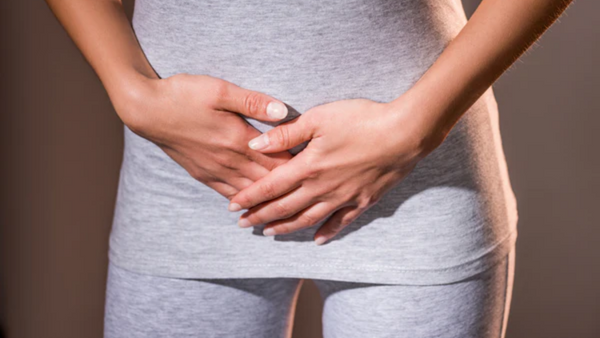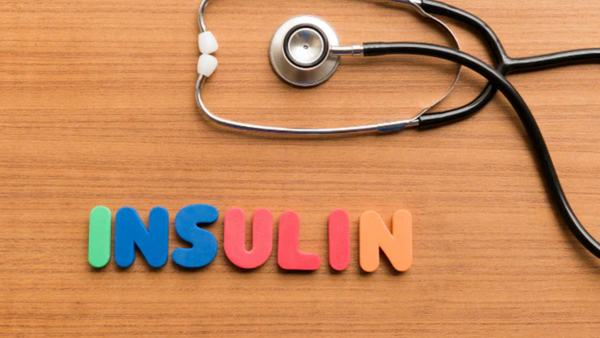Menstrual pain occurs when the muscles of the uterus contract to shed the uterine lining. This can cause painful abdominal cramps and back pain.
Certain messenger substances, so-called prostaglandins, cause the uterine muscles to contract. A high release of prostaglandins can intensify painful cramps.
Lifestyle also seems to play a role in the development of menstrual pain: risk factors include an unhealthy diet with a lot of sugar and little fruit, vegetables and fish. Caffeine, smoking and little physical activity are also associated with severe menstrual pain.
However, menstrual pain can also have organic causes. Examples include endometriosis, a disease in which tissue similar to the uterine lining is found outside the uterus. Or growths in the uterus, so-called myomas.
Painkillers from the group of non-steroidal anti-rheumatic drugs (NSAIDs) are usually used to relieve menstrual pain.
Many women also take the contraceptive pill to relieve menstrual cramps. The pill inhibits the release of prostaglandins, which are responsible for the painful cramps.
Micronutrients can also help relieve menstrual pain.

Vitamin B1
In high doses, vitamin B1 has a pain-relieving effect. Vitamin B1 is important for the transmission of nerve signals.
In one study, menstrual pain was significantly reduced after taking high doses of vitamin B1 compared to a placebo. [1]
Magnesium
Magnesium is important for relaxing muscles and has an antispasmodic effect.
In one study, taking magnesium was able to relieve menstrual pain. The women took magnesium seven days before their period until the third day of their period. [2]
Omega-3 fatty acids
Pain is often caused by inflammation. Omega-3 fatty acids have an anti-inflammatory effect and can thus counteract pain, including menstrual pain.
In one study, omega-3 fatty acids in combination with vitamin E significantly reduced menstrual pain compared to a placebo. [3]

Ginger
Ginger has a pain-relieving effect by reducing inflammatory messengers. The root has also been traditionally used for a long time to treat nausea.
In studies, taking ginger powder can relieve menstrual pain and nausea. The pain-relieving effect appears to be comparable to painkillers such as paracetamol and ibuprofen. [4]
zinc
Zinc is known for its anti-inflammatory effect. In addition, zinc can also inhibit the formation of cramp-promoting messenger substances, the so-called prostaglandins. In this way, zinc can also promote blood flow to the uterine muscles and presumably relieve pain.
In case studies, zinc supplementation has been shown to relieve menstrual pain. [5]
Vitamin D
Vitamin D has an anti-inflammatory effect and can also inhibit the formation of pain-causing substances. These properties can be used to help with menstrual cramps.
Vitamin D deficiency is widespread in Germany. According to a study by the Robert Koch Institute, over 50% of the population is not adequately supplied with vitamin D. [6] Women with menstrual problems seem to be particularly frequently affected by vitamin D deficiency.
In one study, taking vitamin D was able to relieve menstrual pain. [7] In any case, it is important to compensate for a vitamin D deficiency.

Conclusion: Micronutrients can counteract menstrual pain
Micronutrients can have antispasmodic, anti-inflammatory and circulation-stimulating effects and can thus counteract menstrual pain. First and foremost, women with menstrual pain should ensure they have a good supply of these nutrients. They are essential and should not be missing. However, some nutrients, such as vitamin B1, only have a pain-relieving effect in high doses.
WE HAVE GOT YOU A 10% VOUCHER FOR OUR
Vitamin B Complex, Vitamin B Complex Forte , Zinc , Omega 3 ,Magnesium and Vitamin D3
PROVIDED AND HOPE TO BRING YOU JOY WITH IT.
SIMPLY COPY THE FOLLOWING COUPON CODE
AND ENTER IT AT CHECKOUT:
FRAU+V10
To the products
[1] https://pubmed.ncbi.nlm.nih.gov/25363099/
[2] https://pubmed.ncbi.nlm.nih.gov/2349410/
[3] https://pubmed.ncbi.nlm.nih.gov/8623866/
[4] https://www.ncbi.nlm.nih.gov/pmc/articles/PMC4871956/
[5] https://pubmed.ncbi.nlm.nih.gov/17289285/
[6] https://www.rki.de/SharedDocs/FAQ/Vitamin_D/Vitamin_D_FAQ-Liste.html
[7] https://www.sciencedirect.com/science/article/pii/S1028455917303030?via%3Dihub

















